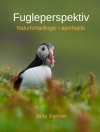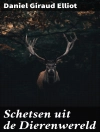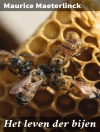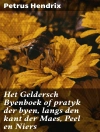In ‘The Malay Archipelago, ‘ Alfred Russel Wallace presents an enthralling two-volume exploration of the natural history and rich biodiversity of Southeast Asia. Written with meticulous attention to detail, Wallace’s work exemplifies the Victorian era’s fascination with tropical exploration, blending scientific observation with travel narrative. This landmark text not only documents the myriad species he encountered but also reflects on the broader themes of evolution and biogeography, laying the groundwork for future ecological studies and the understanding of speciation in the region. Wallace’s vivid prose and methodical observations make the complex interplay of nature accessible to both scholars and general readers alike. Alfred Russel Wallace, a contemporary of Charles Darwin, is often celebrated for his independent formulation of the theory of evolution through natural selection. His extensive travels through the archipelago were underpinned by a profound curiosity about the natural world, as well as a passion for collecting specimens that would challenge existing scientific paradigms. Wallace’s blend of scientific rigor and romanticism toward nature informs his narrative, offering an invaluable perspective on a critical period in the history of biology. ‘The Malay Archipelago’ is highly recommended for anyone interested in the intersection of science and adventure. Wallace’s insights into the relationship between geography and biodiversity not only enhance our understanding of evolutionary theory but also inspire modern conservation efforts. This classic work remains essential reading for both naturalists and enthusiasts of the natural world.
Giới thiệu về tác giả
Alfred Russel Wallace (1823–1913) was a British naturalist, explorer, geographer, anthropologist, and biologist, whose seminal work has had a profound impact on the understanding of biological diversity and biogeography. Renowned for independently conceiving the theory of evolution through natural selection, Wallace’s extensive fieldwork and writings laid down the cornerstone for modern evolutionary thought, paralleling the works of Charles Darwin. His most celebrated book, ‘The Malay Archipelago’ (1869), is not only a remarkable travel narrative but also a pivotal scientific account of the geography, biology, and ethnography of the Indonesian region, offering vivid descriptions of its landscapes, species, and the peoples he encountered. The book is widely regarded as one of the most influential travelogues of the 19th century and reflects Wallace’s keen observational skills and pioneering methodologies in the field of biogeography. The two-volume work is lauded for its meticulous captures of natural history and remains a valuable resource in biodiversity conservation and evolutionary biology studies. Wallace’s literary style is characterized by lucid prose that manages to be both eloquently detailed and accessible, enabling his observations and theories to reach a wide readership. The impact of his travels and studies extends beyond natural history, influencing early anthropological and geographical thought. Wallace’s legacy as a critical figure in the development of evolutionary theory and his contribution to the natural sciences is well-established and continues to inspire contemporary ecological research and conservation efforts.












